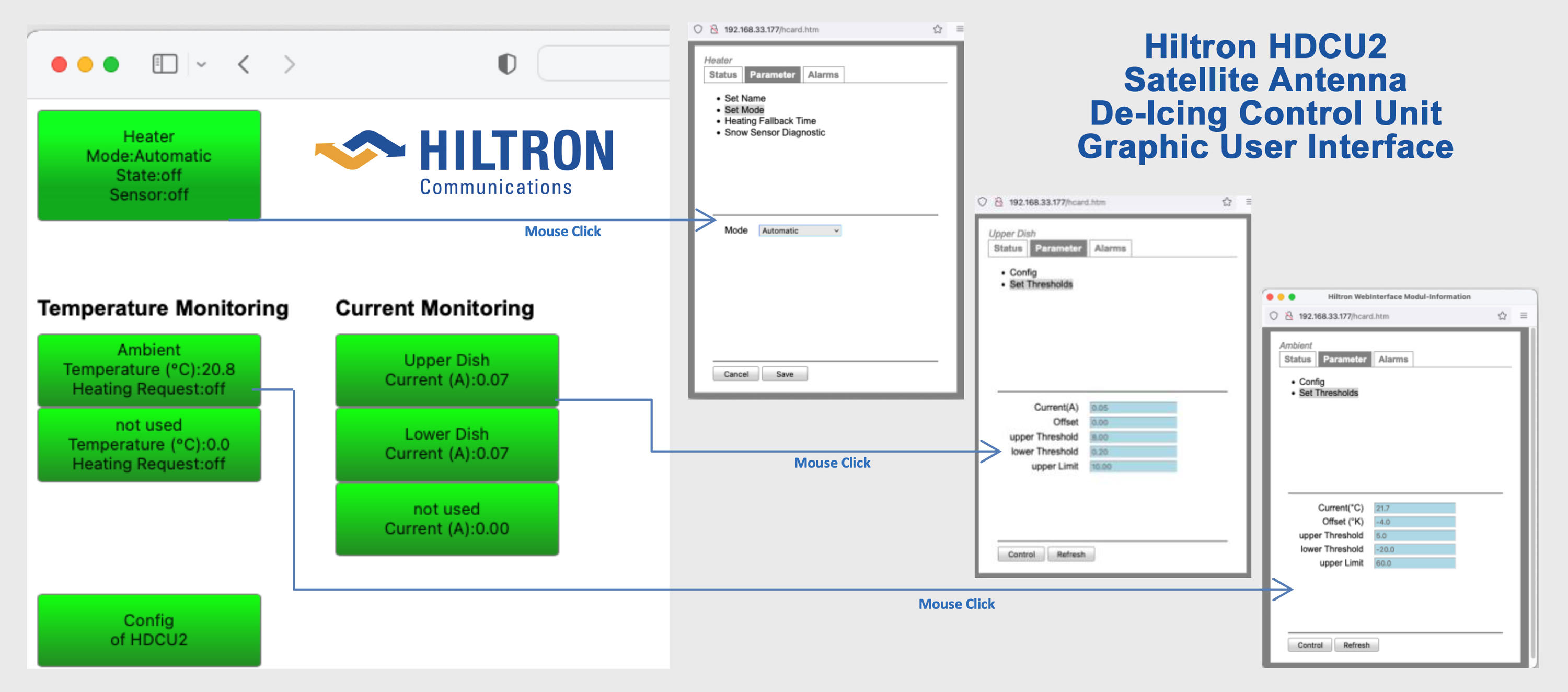Hiltron Unveils Satellite Antenna De-Icing Controller
The new HDCU2 controller is designed for small and media satellite antennas

BACKNANG, Germany—Hiltron Communications has introduced the HDCU2 de-icing sensor and heating controller for satellite antennas.
"Optimized for use with small to medium-sized antenna reflectors, VSAT-oriented, the HDCU2 represents a new generation of our established HDCU and HDCU-E which have operated very successfully over the years in many locations around the world," said Jean-Luc George van Eeckhoutte, sales manager at Hiltron. "Enclosed in a 180 x 180 x 90mm [7 x 7 x 3.5-inch] weatherproof housing, the complete unit conforms to IP66 protection against heavy rain or snow."
The HDCU2 incorporates an ambient PT 100 temperature sensor and an optional reflector in addition to a snow precipitation sensor. Up to three 2.9 kW heating circuits in three-phase 400 volt AC configuration can be controlled. The HDCU2 can alternatively be configured for single-phase 230 volt AC operation where the combined output load for all three power feeds does not exceed 2.9 kilowatts, the company said.
Load control can be performed individually for each of the three circuits. Each heater circuit can supply one or more antenna heater pads. The permitted current for the three heater circuits is controlled and monitored independently via LAN or SNMP, it said.
The controller is offered with an intuitive web-based interface and supports automatic as well as manual control operation. In manual mode, the heating function for each circuit can be switched on or off. Detected currents and temperatures can be monitored remotely. Monitor and control parameters displayed include heater circuit current thresholds, safety switchoff limit, heater activation/deactivation temperature thresholds and related timing, it said.
The HDCU2 is rated for operation in -30 to +50 degrees Celsius [-22 to 122 degrees Fahrenheit] temperature environments and 5 to 95 percent non-condensing humidity. It has a standby power consumption of 4 watts and conforms fully to the relevant CE safety, EMC, emissions and immunity standards, it said.
Connectivity ports along the underside of the housing are provided for a rain and snow sensor, dish temperature sensor, ambient temperature sensor, local area network, mains power input and heater output feeds, it said.
More information is available on the company’s website.
Get the TV Tech Newsletter
The professional video industry's #1 source for news, trends and product and tech information. Sign up below.
Phil Kurz is a contributing editor to TV Tech. He has written about TV and video technology for more than 30 years and served as editor of three leading industry magazines. He earned a Bachelor of Journalism and a Master’s Degree in Journalism from the University of Missouri-Columbia School of Journalism.

